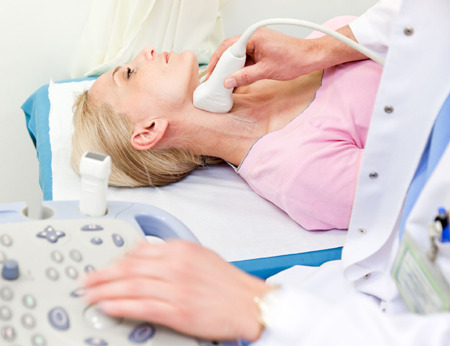Carotid Doppler

Carotid Doppler is an imaging test that involves the use of ultrasound technology to generate detailed images of the carotid arteries present in the neck so as to detect any obstruction or blockage which may be due to the narrowing of the arteries or plaque build-up owing to CAD (coronary artery disease). The carotid arteries are responsible for carrying the oxygenated blood from the heart to the brain. If these get blocked, it can obstruct the flow of blood to the brain thereby increasing the risks of stroke.The test not only helps the doctors to determine whether a person is at risk of having a stroke but also helps them to suggest appropriate preventive measures to alleviate the risks of the same.
Uses of Carotid Doppler
Carotid Doppler can help to:
- Locate the hematoma that is obstructing blood flow
- Detect abnormalities in the carotid artery that is disrupting the blood flow
- Monitor and evaluate the effectiveness of stent after placement
- Evaluate the success of carotid endarterectomy
- Detect clots that may be hindering blood flow
- Detect benign and malignant tumours
- Detect vascular deformities
- To evaluate the cause of increased blood flow to certain organs which may be a result of chronic infection
The procedure can also be performed on small children and infants to:
- Evaluate the flow of blood to the brain
- Predict or rule out the risks of stroke in children suffering from sickle cell disease
- Detect malformed arteries and lymph nodes
Indications of Carotid Doppler
Carotid Doppler is usually recommended to patients who are at a higher risk of experiencing a stroke. This includes people with:
- Uncontrollable blood pressure
- Diabetes
- Elevated cholesterol levels
- Family history of stroke or some other chronic heart disease
- Personal history of transient ischemic attack (TIA) or stroke
- Coronary artery disease
Working
The test is performed with the help of a transducer, a small, hand-held device that generates soundwaves and records the echo that is produced when the same bounce back after hitting the tissues and blood cells. The echoed soundwaves are translated with the help of a computer, into live-action images. This takes about 30 minutes.
Preparing for the procedure
You will be asked to follow the following guidelines prior to the procedure:
- The patient should not smoke or consume coffee at least 2 hours prior to the procedure as these can alter the accuracy of the test results.
- Remove jewellery and other ornaments
- Wear a comfortable open collar shirt to make it easier for the doctors to carry out the procedure.
- If you are on any medication, make sure your doctor knows about it.
During the procedure
- The procedure is performed in an ultrasound lab and takes about 30 minutes.
- The patient needs to lie down on his back with the head bent slightly towards the back. The position of your neck may be changed for better access.
- The doctors will apply a special gel on your neck so as to reduce the air between the neck surface and the transducer as well as to facilitate the easy transmission of the ultrasound waves.
- The transducer is then gently placed against your skin and moved back and forth. The patient is likely to feel slight pressure which is normal.
- The images, thus generated, are recorded and used to evaluate the condition of your carotid arteries.
- After the procedure is complete, the gel will be wiped off and you can resume with your normal activities.
Results
If the tests suggest that you are at a higher risk of stroke, you will be recommended to opt for some healthy lifestyle changes which include:
- The patient needs to stay active and exercise regularly for at least 30 to 40 minutes.
- A healthy diet is very important. You will be prescribed a personalized diet chart that you will be required to follow.
- It is important to maintain healthy body weight as obesity significantly increases the risks of stroke
- Avoid smoking and drinking.
- Try to maintain healthy cholesterol and blood pressure levels.
- In some case, the patient may even require a carotid endarterectomy to remove the plaque or carotid angioplasty to open narrowed arteries.


